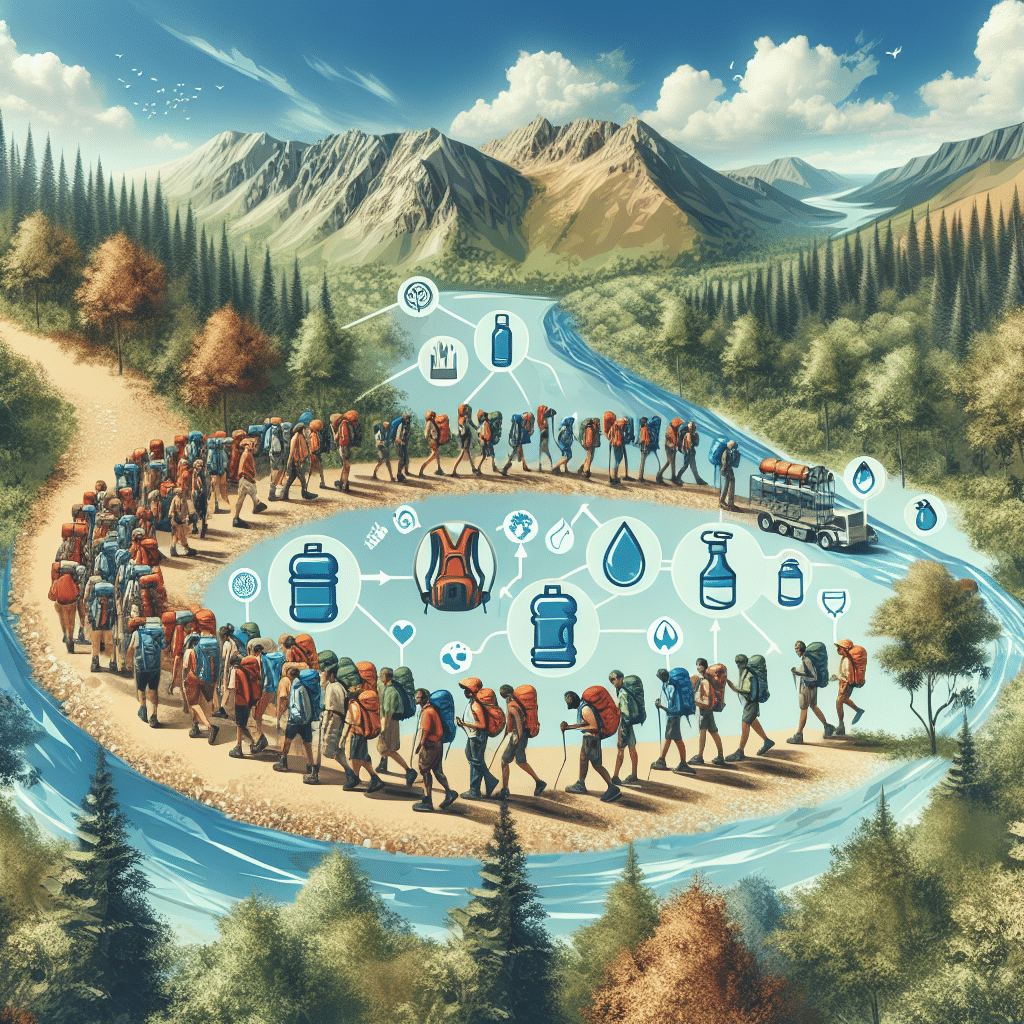Understanding Hydration Needs for Group Hiking
When organizing a group hike, ensuring proper hydration is crucial. Every hiker’s hydration needs vary based on several factors including age, weight, level of exertion, and environmental conditions. For group hikes, collectively assessing these needs can help in planning the right hydration strategy.
Types of Hydration Systems
-
Hydration Packs: These backpacks come with built-in reservoirs that allow for hands-free drinking through a tube. Ideal for moderate-length hikes, they allow quick access to water without pausing.
-
Water Bottles: More traditional but effective. Investing in insulated bottles can help keep water cool during hot days. Ensure bottles can fit in your backpack pockets or side slots.
-
Water Filters and Tablets: For longer hikes where water sources are available, consider portable water filters or purification tablets. Filters can eliminate bacteria and improve taste, while tablets are compact and lightweight.
Pre-Hike Preparation
-
Calculate Water Needs: A general recommendation is about half a liter of water per hour of hiking. Adjust this based on the hike’s intensity and the temperature. Always encourage hikers to carry extra water.
-
Group Discussion: Evaluate everyone’s hydration preferences. Some may prefer packs while others lean towards bottles. Address these needs in your plan.
-
Test Hydration Systems: Before the hike, have everyone test their hydration systems. This ensures everyone knows how to use them and can address any issues beforehand.
Hydration Strategies During the Hike
-
Regular Water Breaks: Schedule hydration breaks every 30 to 60 minutes. This promotes regular fluid intake and allows the group to stay refreshed.
-
Visual Reminders: Use a group leader to remind everyone to drink is essential. Creating a signal can work too, ensuring constant hydration.
-
Flavor Enhancements: Encourage the addition of natural flavors like lemon, mint, or electrolyte powders to keep water interesting, especially for those who may neglect drinking plain water.
Manage Your Hydration Levels
-
Know the Signs of Dehydration: Fatigue, dizziness, or dark urine signal that a hiker is not drinking enough. Educate your group about these signs.
-
Practice Water Distribution: If someone has excess water, consider redistributing it among group members to equalize loads and ensure everyone has enough.
-
Consider Weather Conditions: On hot days, remember to hydrate more often. In cooler temperatures, people often neglect hydration; remind them to maintain their intake regardless of temperature.
Post-Hike Hydration
-
Replenishment: After the hike, encourage the group to replenish lost fluids with water or electrolyte drinks. This aids recovery and ensures good hydration for the next outdoor adventure.
-
Assess Individual Needs: After returning, check in with group members to ensure everyone feels well-hydrated and identify any issues faced during the hike.
-
Educate on Hydration: Share insights on post-hike hydration practices, encouraging everyone to maintain hydration levels in the days following the hike.
Hydration Myths and Facts
-
Myth: It’s Too Late to Hydrate Once You’re Thirsty: Reality: Thirst is often a sign that dehydration has already begun. Encourage drinking before you feel thirsty.
-
Myth: All Fluids Count as Hydration: While drinks like tea and coffee contribute fluids, water should be the primary source for good hydration without added caffeine or sugars.
-
Fact: You Can Overhydrate: Hyponatremia, or water intoxication, can occur. Balance intake with electrolytes, especially during physically demanding hikes.
Advanced Hydration Solutions
-
Camelbacks: These offer various sizes and designs tailored for different distances and types of hiking. Picking a model with a larger reservoir helps during lengthier excursions.
-
Intelligent Hydration Reminders: App technologies are evolving; some hydration packs or smart bottles can alert hikers when it’s time to drink.
-
Portable solar water purifiers: For extended expeditions where water sources are available, these can harness solar energy to purify water effectively and sustainably.
Budget-Friendly Tips
-
DIY Hydration Packs: You can repurpose old backpacks to serve as hydration packs. Buy a hydration bladder to fill the pack, saving costs while ensuring everyone has a system.
-
Bulk Water Purchases: Rather than purchasing individual bottles, buy large containers and refill personal bottles and reservoirs. This can also reduce plastic waste.
-
Water Stations: If you’re hiking a loop near cars or campsites, consider bringing large bottles to refill smaller packs, easing the burden on all hikers.
Environmental Considerations
-
Respect Water Sources: When filtering water, do it away from natural sources to prevent contamination. Teach the group about Leave No Trace principles.
-
Eco-Friendly Products: Choose reusable over disposable containers. Promote biodegradable cleaning solutions if using hydration packs.
-
Stay Informed about Local Water Quality: Before the hike, research potential water sources to ensure they’re safe for consumption, which is especially vital in remote areas.
Conclusion of Hydration Tips
In summary, successful group hiking hydration requires careful planning, knowledge sharing, and consideration of individual needs. With the right approach, everyone can enjoy their hiking experience fully hydrated and healthy.
